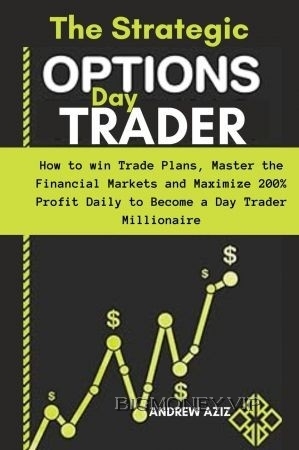The Strategic Options day Trader: How to win Trade Plans, Master the Financial Markets and Maximize 200% Profit Daily to Become a day Trader Millionaire by Andrew Aziz

Chapter 1
What are options and how do
they work?
Financial instruments known as options provide the buyer the choice—
but not the obligation—to purchase or sell the underlying asset at a
given price and time. As derivatives, the value of an option is contingent
upon the value of another asset, such as a currency, index, stock, or
commodity.
CONTRACTS INVOLVING the buyer and the seller are known as options.
The seller receives the premium from the buyer in exchange for granting
the option, and the buyer pays the seller a premium to obtain the option.
The price of the option, known as the premium, is based on a number of
variables, including the interest rate, the underlying asset's volatility, the
strike price, the period before the option expires, and the current price of the
underlying asset.
The fixed price at which the buyer can buy or sell the underlying asset
in order to exercise the option is known as the strike price. The final day on
which the option may be exercised is known as the expiration date. If the
option is not exercised by the expiration date, it becomes worthless.
CALL and put options are the two primary categories of options. The
buyer of a call option has the option to purchase the underlying asset at the
strike price, whereas the buyer of a put option has the option to sell the
underlying asset at the strike price. If the buyer exercises the option, the
seller of a call option is obligated to sell the underlying asset at the striking
price, and the seller of a put option is obligated to purchase the underlying
asset at the strike price.
IF THE PRICE OF THE underlying asset moves in the buyer's favor, they
will be able to benefit from the option. Buyers of call options, for instance,
stand to gain if the underlying asset's price rises above the striking price,
while buyers of put options stand to gain if the underlying asset's price
drops below the strike price. If the underlying asset's price swings against
the buyer or if the option expires worthless, the seller of the option may
profit from the trade.




